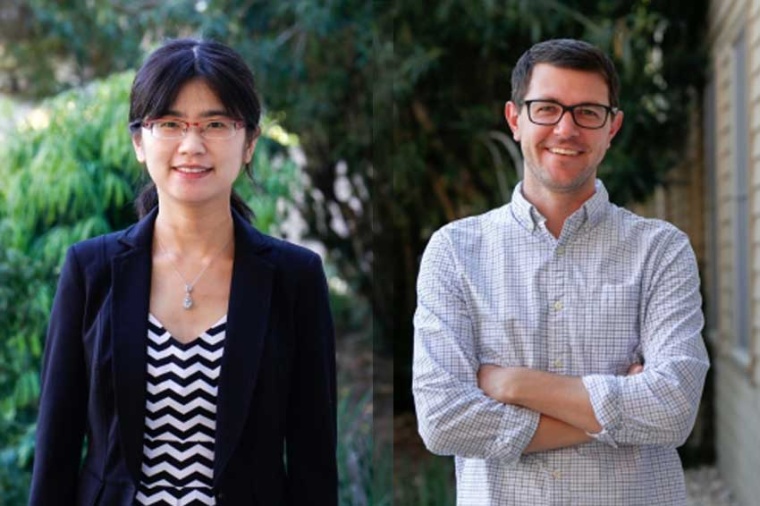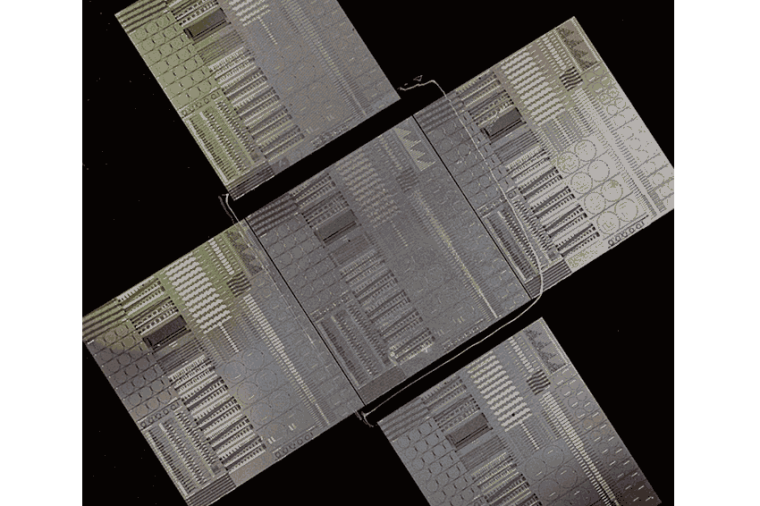Quantum collaboration: Cisco supports UCSB scientists
Co-operation between UC Santa Barbara researchers and Cisco Systems aims to push the boundaries of quantum technologies.
Assistant professors Yufei Ding and Galan Moody have received research awards from the technology giant to work with its new quantum research team, which was formed to pursue the research and development required to turn quantum hardware, software and applications into broadly used technologies.
“We are pleased to support the research by professors Moody and Ding in quantum information processing,” said Alireza Shabani, head of Cisco’s quantum research and the Emerging Technologies & Incubation team. “Collaborations with universities are part of Cisco’s plan for quantum technology development, and we are excited for the opportunity to work with UCSB labs.”


Quantum computers have already been shown to solve some problems more efficiently than classical computers. The key to the incredible speed of a quantum computer lies in its ability to manipulate entangled quantum bits. To date, most efforts to build quantum computers have relied on qubits created in superconducting wires cooled to near absolute zero or on trapped ions held in place by microelectric circuits. But those approaches face certain challenges, most notably that the qubits are extremely sensitive to environmental factors. As the number of qubits increases, so too does the error rate when executing an algorithm.
Cisco has agreed to provide 150,000 dollars in support of an alternative approach pursued by Moody that uses a photon as an optical qubit to encode quantum information and to integrate the components necessary for that process into a photonic integrated circuit (PIC) with built-in error correction.
“We’re thrilled to be able to work with the Cisco quantum research team,” said Moody, an assistant professor of electrical and computer engineering. “The grant helps support the design, fabrication and testing of prototype devices, but more importantly, we will be collaborating closely with their team to tackle the key challenges for scalable quantum computing with integrated photonics.”
Traditionally, silicon photonics are used to guide light around a photonic chip, but a collaboration with Prof John Bowers, a photonics pioneer and director of UCSB’s Institute for Energy Efficiency, demonstrated that aluminum gallium arsenide is orders-of-magnitude more efficient at generating the quantum states of light that are needed for photonic quantum computing. Moody’s research group has already designed the first version of computing architecture it would like to test.
“With Cisco, we’ll develop a prototype quantum computing chip to showcase the advantages of AlGaAs,” said Moody. “Then, we’ll evaluate the performance of our prototypes, refine the designs and explore new architectures to improve the performance and scalability going forward.”
“While we’re still quite far from having practical and generally useful quantum computers,” he said, “we aim to address some of the fundamental and technical challenges needed to advance photonic quantum computing technologies to the point where we can make real and impactful benefits to society.”
Tackling optimization problems
Ding, an assistant professor of computer science, has received 100,000 dollars from Cisco to support several novel quantum computing research activities from a programming system perspective. She has proposed an in-depth and systematic study of optimization problems in quantum circuit distribution, a project that could help researchers build a network of connected quantum devices.
“I am excited for this opportunity to deepen and widen my programming and compiler research on quantum computing through the Cisco research grant,” said Ding. “I look forward to working with Cisco’s quantum team, Prof Moody and other awardees to build advanced quantum systems.”
Ding has proposed tackling the optimization problems by focusing on compilation, the process by which a computer converts a high-level programming language into a secondary language that it can understand and use to create an executable file or result. The software that performs this conversion, called a compiler, is a tool that can be used to overcome the gap between algorithms and hardware. In the case of a quantum computer, a compiler would understand any hardware constraints and automatically map a quantum program to the physical devices.
According to Ding, an advanced programming system that supports large quantum programs could enable major quantum applications, such as quantum chemistry and combinatorial optimization, and machine learning. The system could also be expanded and applied to the fields of materials science and finance.
Company
University of California, Santa Barbara (UCSB)Office of Public Affairs and Communications
Santa Barbara, CA 93106-2100
US
most read

Electrical and digital industry calls for strategy for Europe's digital sovereignty
The French and German electrical and digital industry associations, FIEEC and ZVEI, are calling for a proactive strategy for Europe's digital sovereignty.

Laser Components: customized laser optics since 1986
Laser Components began coating individual laser optics almost 40 years ago. These are used in laser processes in numerous industries, including medicine, defense and aerospace.

New member of the board of VDMA Robotics + Automation
Dr. Michael Jürgens, CEO of Kuka Robotics, has been appointed to the board of the VDMA trade association.

Qioptiq Photonics becomes Excelitas Germany
The renaming is part of the global consolidation of the Excelitas Group.

Change in management at Stemmer Imaging: Arne Dehn steps down
New interim CEO Paul Scholten takes over management






